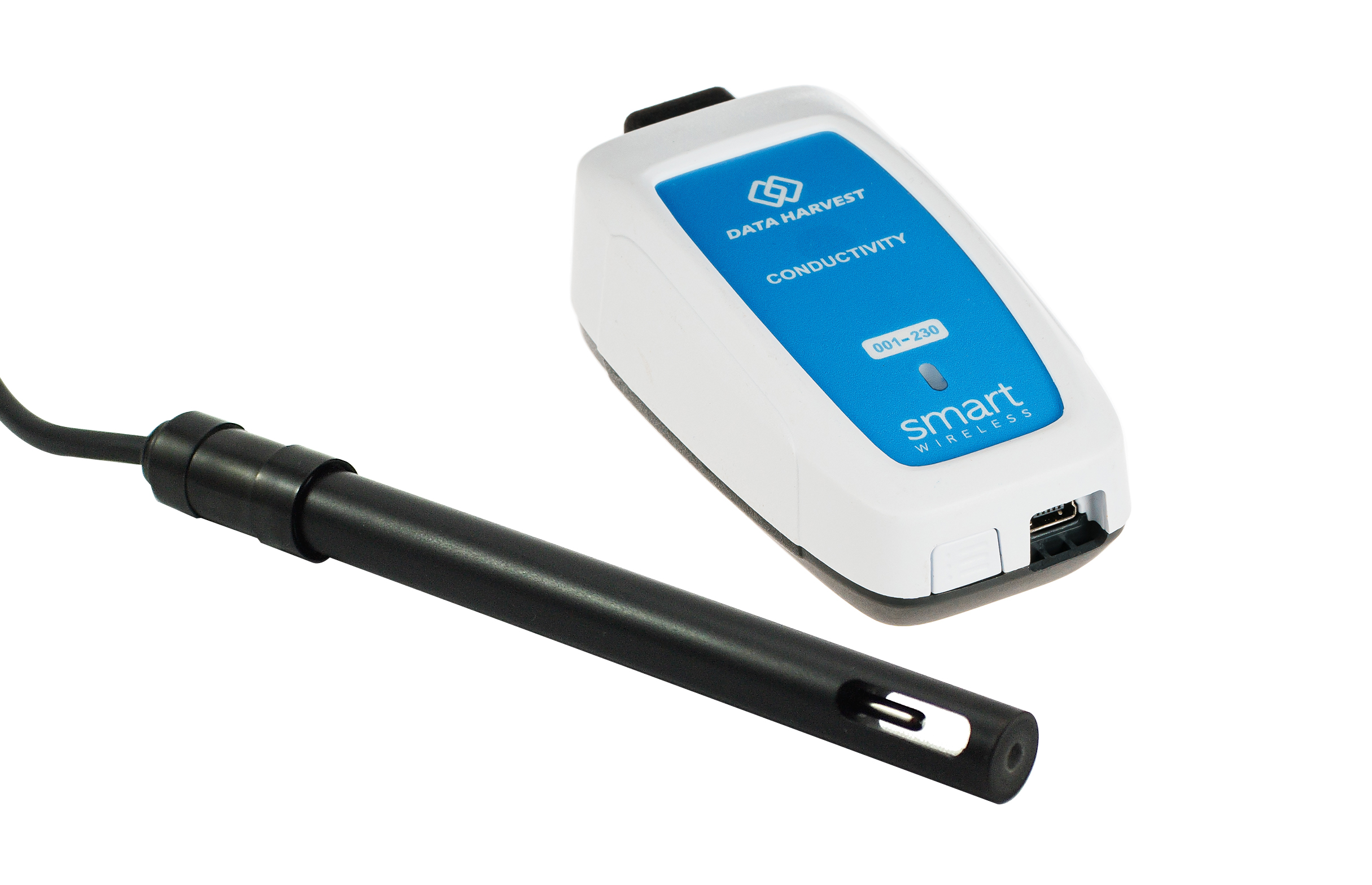Introduction
Thank you for purchasing the Smart Wireless Conductivity Pack. We pride ourselves on producing high quality products that meet with the demands of the busy classroom environment. If you have any problems using this sensor, please read this documentation in full before contacting the Data Harvest support team.

The Conductivity sensor enables a Conductivity electrode to be connected to the EasySense software.
The Conductivity sensor is used to measure the conductivity of a solution. The Conductivity electrode is a simple epoxy-bodied carbon (graphite plate) type selected for its durability in field use. It is ideal for measuring salinity and changes in conductivity of a water sample. It can be used by chemists for investigating the difference between ionic and molecular compounds in an aqueous solution. Although it will not identify the specific ions that are present, it can be used to determine the total concentration of ions in a sample.
If used for salinity measurements the plates will become contaminated with Na+ and Cl- ions. For salinity measurements we recommend the dedicated salinity sensor with platinum plates is used.
The SI unit of conductance is Siemens per cm (S cm-1). This was formerly known as a mhos (equal to S cm-1) or CF units (mS cm-1 x 10). The Siemen is a large unit, so the value for aqueous samples is commonly expressed in microsiemens (µS).
Overview
The Smart Wireless Conductivity Pack is USB and Bluetooth compatible. Using Bluetooth, a sensor can connect to mobile devices, tablets, laptops and desktops.
The sensor has several ranges which do not always overlap (the K is subject to a 20% variance).
The range required is set in the Devices icon of the EasySense software
Electrical conductivity is an inherent property of most materials. Electrons carry electric current in metal; in water electrical current is carried by charged ions. The conductivity of a solution is determined by the ability of a solution to conduct an electric current between two electrodes. This will depend on the number of charge carriers, how fast they move, and how much charge each one carries.
For most water solutions, the higher the concentration of dissolved salts, and therefore more ions, the higher the conductivity.
Low conductivity will indicate an absence of ions and therefore purity of water.
Conductivity is measured by putting a voltage across two electrodes, which have a fixed area and are a fixed distance apart. The electric current that flows between the two electrodes varies as the conductivity of the solution changes.
Each Conductivity electrode has its own physical characteristics. This is defined as the cell constant (K) and is dependent on the distance (d) between the two electrodes, and the area of the electrode surface (A).
K = d/A
The Conductivity electrode supplied has a nominal cell constant (K) of 1.0 cm-1.
Alternating Current is used to prevent complete ion migration to the two electrodes. With each A.C. cycle the polarity of the electrodes are reversed which in turn reverses the direction of ion flow. This will prevent electrolysis and polarisation from occurring.
Although the presence of ions due to dissolved salts will increase the conductivity of water, it is not specific and can only be used to determine solution concentration if a single known salt is present.
Some species ionise more completely in water than others do, and their solutions are more conductive as a result. Each acid, base or salt has its own characteristic curve for concentration vs. conductivity. The relationship persists until very large ion concentrations are reached.
Temperature compensation
Temperature has a large effect on conductivity. The Conductivity electrode incorporates an in-built temperature sensor that is used to compensate for changes in the conductivity of solutions with temperature.
The temperature compensation is to counteract real changes in the conductivity of solution with temperature, not variations in the electrode with temperature.
For example: a 0.01 mol dm-3 KCl solution has a conductivity of 1413 µS at 25ºC. Its conductivity changes from 1020 µS at 10ºC to 1552 µS at 30ºC. The Conductivity Sensor will read a value of approximately 1413 µS at any temperature in the 10 to 35ºC range.
This allows the conductivity of sample solutions to be compared without bringing them all to the same temperature.
